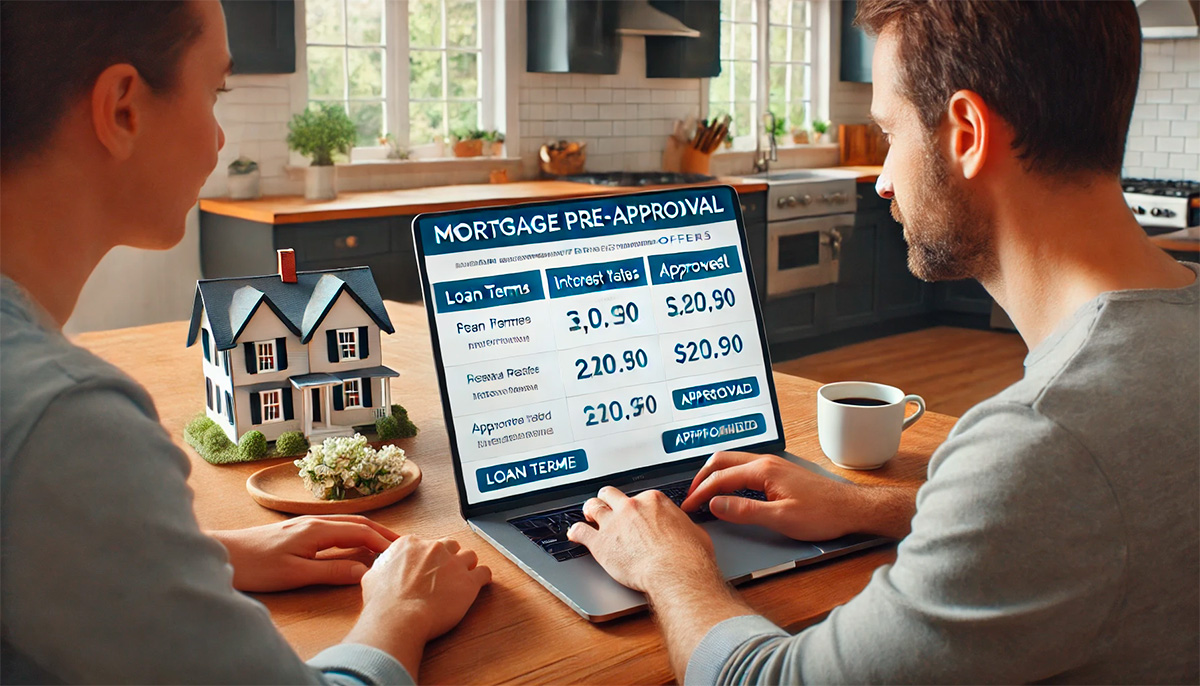
For first-time homebuyers, securing a mortgage pre-approval is a pivotal step in the journey toward homeownership. This process not only clarifies how much you can afford but also strengthens your position as a serious buyer in a competitive housing market. However, navigating mortgage pre-approval can be daunting for those new to the process.
This guide provides a comprehensive overview of mortgage pre-approval, breaking down the steps, requirements, and strategies to ensure a smooth experience for first-time buyers.
What Is Mortgage Pre-Approval?
Mortgage pre-approval is a formal process through which a lender evaluates your financial profile to determine the maximum amount they are willing to lend you for a home purchase. Unlike pre-qualification, which is a less detailed estimate based on self-reported information, pre-approval requires a thorough review of your financial documents and credit history.
A pre-approval letter demonstrates to sellers and real estate agents that you are a qualified buyer, ready to move forward with a transaction. It also gives you a clear understanding of your budget, allowing you to focus on homes within your price range.
Steps to Secure Mortgage Pre-Approval
Securing mortgage pre-approval involves several critical steps. By following these steps methodically, first-time buyers can position themselves for success.
-
Review Your Financial Health
Before applying for pre-approval, take a close look at your financial situation. Assess your income, debts, and savings. Calculate your debt-to-income (DTI) ratio, which compares your monthly debt payments to your gross monthly income. Most lenders prefer a DTI ratio below 43%, though some may allow higher ratios depending on other factors. -
Gather Required Documents
Lenders require specific documentation to process a pre-approval application. Commonly requested items include proof of income (such as pay stubs or tax returns), bank statements, credit reports, and identification. Organizing these documents ahead of time ensures a smoother process. -
Check Your Credit Score
Your credit score plays a significant role in the pre-approval process. A higher credit score often results in better loan terms, such as lower interest rates. If your score needs improvement, take steps to boost it before applying. Strategies include paying down debts, correcting errors on your credit report, or maintaining a consistent payment history. -
Research Lenders and Loan Options
Not all lenders or loan programs are created equal. Researching and comparing options can help you find a lender that aligns with your needs. For first-time buyers, government-backed programs such as FHA loans or VA loans may offer favorable terms, including lower down payments and more flexible credit requirements. -
Submit Your Application
Once you’ve chosen a lender, submit your pre-approval application along with the necessary documents. The lender will evaluate your financial information and provide a pre-approval letter specifying the loan amount, interest rate, and terms for which you qualify.

Overcoming Common Challenges
First-time buyers often face unique challenges during the pre-approval process. Understanding these obstacles can help you prepare and overcome them effectively.
One common issue is insufficient credit history. Many first-time buyers, particularly younger applicants, may have limited credit experience. Building a strong credit profile by opening and responsibly managing accounts can improve eligibility.
Another challenge is saving for a down payment. While traditional loans may require 20% down, many programs allow for smaller down payments, sometimes as low as 3%. Exploring options like down payment assistance programs can help bridge the gap.
Fluctuating income or inconsistent employment history can also complicate pre-approval. Lenders prioritize stability, so demonstrating consistent earnings and long-term employment strengthens your application.
Benefits of Mortgage Pre-Approval
Mortgage pre-approval offers several advantages for first-time buyers. One of the most significant benefits is increased confidence. Knowing your budget allows you to focus on properties within your price range, saving time and reducing stress.
Pre-approval also strengthens your negotiating position. Sellers often favor buyers with pre-approval letters, as it indicates readiness and reduces the risk of financing issues. In competitive markets, this can make the difference between securing your dream home and losing out to another bidder.
Finally, pre-approval streamlines the homebuying process. By addressing financial documentation and lender requirements upfront, you can move quickly once you find the right property.
Tips to Strengthen Your Pre-Approval Application
To maximize your chances of success, consider strategies to enhance your pre-approval application. Maintaining steady income and employment is critical. Avoid significant job changes or reductions in work hours during the application process.
Minimizing debt also improves your standing. Pay down credit card balances or consolidate debts to reduce your DTI ratio. Additionally, avoid opening new lines of credit, as multiple inquiries can negatively impact your credit score.
Saving for a larger down payment is another effective strategy. A higher down payment reduces the loan amount needed, improving affordability and lender confidence. It may also help you avoid private mortgage insurance (PMI), which adds to monthly costs.
Life After Pre-Approval
Once you’ve received pre-approval, it’s essential to maintain your financial stability. Avoid making major purchases or taking on new debts that could affect your loan terms. Pre-approval is not a guarantee, and lenders may re-evaluate your financial situation before finalizing the loan.
Stay in close communication with your lender and real estate agent to ensure a smooth process. Your pre-approval letter will specify a validity period, typically 60 to 90 days, so use this time wisely to search for and secure a property.
Adapting to Changing Market Conditions
In competitive markets, pre-approval becomes even more critical. With limited inventory and high demand, buyers with pre-approval letters are better positioned to act quickly and make compelling offers. Additionally, understanding market conditions, such as interest rate trends and property value fluctuations, can help you tailor your approach.
For instance, in a rising interest rate environment, locking in a fixed rate early can protect against future increases. Conversely, during a buyer’s market, pre-approval may allow you to negotiate favorable terms with sellers eager to close deals.
Conclusion: Your First Step Toward Homeownership
Mortgage pre-approval is a vital step for first-time buyers, offering clarity, confidence, and a competitive edge in the housing market. By understanding the process and taking proactive steps to strengthen your financial profile, you can navigate pre-approval with ease and set the stage for a successful homebuying journey.
With preparation, organization, and the right guidance, pre-approval becomes more than a formality—it’s your ticket to unlocking the door to your dream home.
